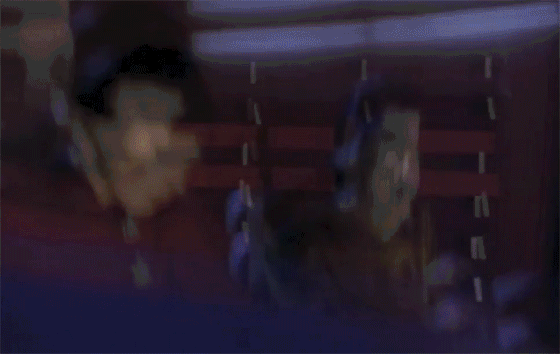Screenshake should move the camera around smoothly but unpredictably.

It shouldn’t jitter the camera around in a way that makes it hard to follow what’s on screen. That’s why you should use continuous oscillating functions to produce your shake instead of random values. I also think it’s useful to make a directional shake to help connect the shaking to the thing that caused it – shake the camera away from an explosion.
Since it seems most camera shake tutorials show you how to use random shake, here’s one for how to use continuous functions to produce shake. I’m using sine and perlin noise because they’re easily accessible, but you could use any oscillating continuous function.
On to the shake:
// Our inputs:
Transform _Target;
float _Seed = 0f;
float _Speed = 20f;
float _MaxMagnitude = 0.3f;
float _NoiseMagnitude = 0.3f;
Vector2 _Direction = Vector2.right;
// Use sine to get a value that oscillates with time. This makes our camera
// move back and forth. Scale time with _Speed to shrink or grow the period of
// the oscillation which makes the shake faster or slower.
// Since shakes are tied to time, you may see multiple objects shaking in sync.
// The _Seed value allows you to offset shakes. You could set it to a random
// value in Start.
var sin = Mathf.Sin(_Speed * (_Seed + Time.time));
// Shake along a direction, but use Perlin noise to get an offset. Scale
// the noise (which is in [-0.5,0.5]) to adjust the amount of deviation
// from our direction.
var direction = _Direction + Get2DNoise(_Seed) * _NoiseMagnitude;
// Normalize the result (limit vector length to 1) to ensure we're never
// more than _MaxMagnitude away from neutral.
direction.Normalize();
// Multiply our bits together to find our position this frame. Since we're
// using two continuous functions (sine and perlin), we won't be far off
// from where we were last frame.
// Additionally, we have a fade value so we can reduce the shake strength
// over time.
_Target.localPosition = direction * sin * _MaxMagnitude * _FadeOut;
You can see how it looks to shake the camera or an object (Using Easing.CircIn instead of linear for FireOnce):
And compare it against a random shake (_Target.localPosition = UnityEngine.Random.insideUnitCircle * _MaxMagnitude * _FadeOut):
The full Unity implementation:
Be sure to provide a user option to disable shakes! They make some people
nauseous.
You could easily scale the _MaxMagnitude to shrink down all of your shakes if
you want to provide multiple levels of shake instead of only zero shake.
If you’re interested in more, watch Juicing Your Cameras With Math. Squirrel is a great speaker and he talks more about using noise for your shake, goes into rotational shake, and describes a better way to think about how much shake to apply (trauma). There’s also other camera techniques in the talk (smooth motion, framing, split-screen).
Update (2021-09-13)
For shakes caused by constant disturbance rather than individual impacts, you could use Jonny Morrill’s method of interpolating between random amplitudes with decay which works kind of like a spring but uses random values for its amplitudes but is still continuous. The result looks like a rumble or earthquake.